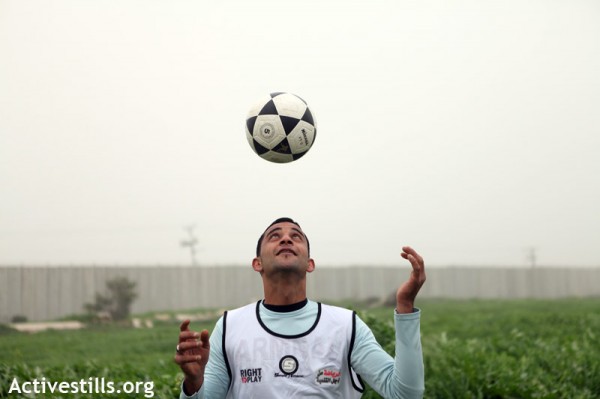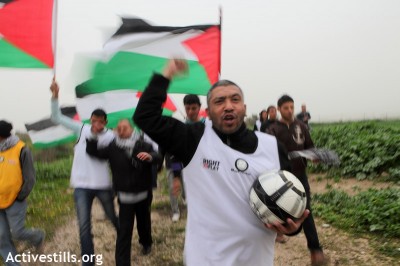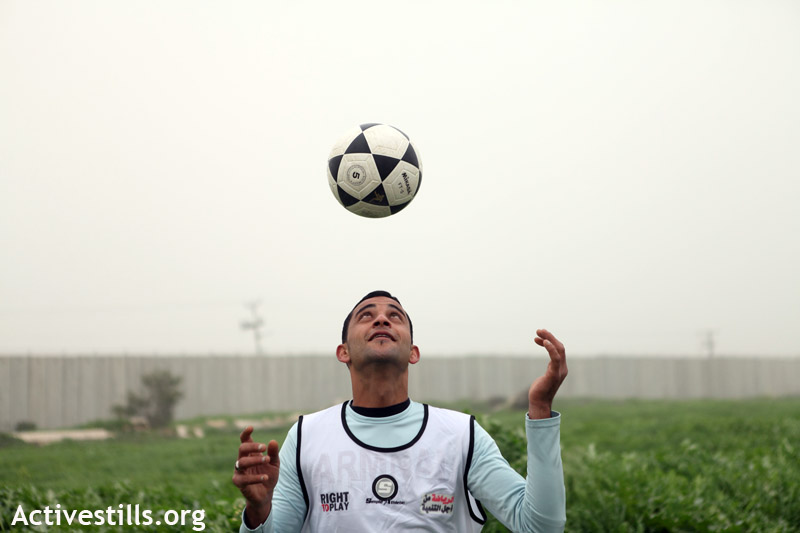7 February 2012 | Chroniques de Palestine

Since 2008, demonstrations are organized in front of Erez in Beit Hanoun. This is in defiance of the “no go zone” imposed unilaterally by the Israelis. Any person who approaches the Green Line is under risk of being shot at. In fact many farmers; or rubble collectors have been shot in these border areas. The “no go zone” is not really defined. The Israelis announced a 300 meters line not to be crossed but people have been shot as far as 1,5 kilometer away from the border. All this “shoot and kill” policy means than more than 30% of the agricultural land in Gaza has been made inaccessible to Palestinians due to the imminent danger of shooting by the Israeli army. This is affecting thousands of farmers along the roughly 50km-long border with Israel. Many lands in these areas have been bulldozed. Houses were destroyed especially during Operation Cast Lead. The zone has become a strange no-mans land with not one tree standing. For more information see here.

In defiance of this policy, Palestinians and their supporters walk with great courage every Tuesday into the buffer zone. Last time I went to the demonstration in Beit Hanoun, Vik (Vittorio Arrigoni, a long-termer Italian solidarity activist and journalist who was killed on 15 April 2011 by suspected members of a Palestinian Salafist group in Gaza) was there. I would certainly not have imagined than one year and an half year ago I would be back in the same demonstration where a football game would be held in his memory. The demonstration was also held in memory of Mustafa Tamimi from the West Bank village of Nabi Saleh. All suddenly the demonstration took a different meaning. It was somehow heartwarming to hear a familiar name: Nabi Saleh, here in Gaza, connecting all the places involved in the popular resistance. The more connections are being built, the stronger it will become. It was also good to walk for Vik.
We met as last time near the destroyed building of the agricultural college of Beit Hanoun and walked into the direction of Erez, together with flags from different countries and footballs. One noticeable sad difference with last year was the absence of women in the demonstration; apparently it has become too sensitive now for them to participate. When we reached the open field we continue further and further until a distance of about 50 meters from the concrete Wall and Erez crossing.
In 2010, we could only approach within 250 meters. Unlike the demonstrations in the West Bank, here we see only rarely Israeli soldiers. Yet they are there, hidden in their military towers and they can shoot at any time, as they did last week and here, there is nowhere to hide or take cover. You feel completely vulnerable.
After a few launch in the air of the footballs, we retreated a bit to enjoy a football game between a team made up of internationals and a team of Palestinians.

Beit Hanoun is currently the only place in the Gaza Strip where such regular demonstrations are held. Saber Zaaneen (photo n.1) , the coordinator of the Beit Hanoun Local Initiative, is one of the main organizers of the protest. See below some extracts of an interview I conducted in October 2010:
” On 2nd July 2008, the Israeli army announced the existence of a “buffer zone”. As Palestinians, we refuse to call it “buffer zone”. A buffer zone is between two countries, but the so called “buffer zone” is on Palestinian lands and we do not accept it. We call it “zones where Palestinians do not have access”. [OCHA uses the term “no go” zone]. In Beit Hanoun we are particularly affected because we have the greenline on the north and on the east. We decided to do something to oppose this decision and resist. We had to support the farmers. I love what they are doing in Bil’in, Ni’lin, in Al Ma’sara to resist the Wall. We were inspired by them and we decided to do the same in Gaza. On 27 July 2008, we organized our first demonstration against the “buffer zone” to say: we are here and we will not move. We went to the direction of Erez, carrying some Palestinian flags. Hundreds of people came. But when we approached, the Israeli army shot at us, even before we reached the 300 meters. The Israeli army then increased the shootings. Farmers were shot, even if they were standing after the line. Many young people collecting rubble were also shot.
(…)
There is a high price to pay. It can be death. I am not supposed to die there because I am an unarmed civilian, but I know it can happen. I think of my family and it is hard, but this is my duty. Anyone who wants freedom has to pay. We will continue to struggle until we got our rights. We will never stay silent.”

